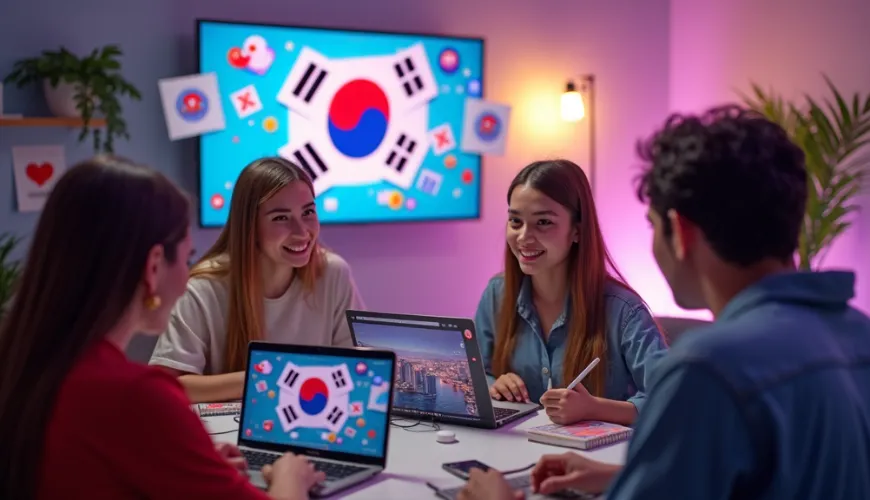Unlocking Seamless English to Korean Translation: Your Go-To Guide for Accuracy and Speed
TL;DR
– Translate faster without sacrificing nuance.
– Avoid common formality & cultural traps.
– Test Claila's free tier (25 AI messages + 3 PDF chats ≤ 25 MB) to localise your first file today.
If you're a freelancer, YouTuber, or small business owner looking to translate English into Korean, you've probably realized it's not just about switching words from one language to another. It's about capturing meaning, tone, and cultural relevance – and doing it fast without compromising quality.
In today's global economy, reaching Korean-speaking audiences can open up massive opportunities. South Korea is not only a tech-savvy, trendsetting country, but also ranks as one of the world's most vibrant digital markets. Whether you're localising a product, subtitling a video, or creating bilingual marketing content, getting your English-to-Korean translation right is crucial.
So how do you make sure your translation is both accurate and efficient?
Let's break it down.
Why English to Korean Translation is More Complex Than You Think
Korean and English differ significantly in grammar structure, word order, and nuance. For instance, Korean is an SOV (Subject-Object-Verb) language, whereas English is SVO (Subject-Verb-Object). That alone changes how sentences are constructed.
Then there's honorifics — the Korean language has multiple levels of formality depending on context and the relationship between speakers. Say the wrong thing the wrong way, and you might unintentionally come off as rude or distant.
And don't forget cultural context. A joke or idiom that's popular in the U.S. might not translate well in Seoul. In fact, it could even confuse or offend your Korean audience.
This is why choosing the right tool or translator matters.
Who Needs English-to-Korean Translation Services?
Let's take a real-life look at why someone might need to translate English into Korean, fast and with precision:
Freelancers working on design, marketing, or tech projects with Korean clients need quick yet accurate localisation; YouTubers rely on high‑quality subtitles to reach new Korean subscribers; and small‑business owners rolling out bilingual packaging or storefronts must ensure that every phrase lands correctly. (If you also sell into Türkiye, our separate guide on localisation pitfalls may help: see english-to-turkish-translation.)
Each of these users has a different volume of content and turnaround time. But one thing they all have in common? The need for accuracy without the wait.
Common Pitfalls When Translating English into Korean
Before you hit "translate" on your next project, beware of these common issues:
Word‑for‑word traps
Literal translations miss nuance; for instance, rendering "What's up?” verbatim strips away its casual flavour and jars native readers.
Cultural blind spots
Idioms or pop‑culture jokes that click in the U.S. often fall flat—or worse, offend—in Seoul, so adapt rather than mirror.
Unedited AI output
Speedy machine results still need a human sweep for tone and context; otherwise you risk awkward phrasings.
Formality mismatches
With Korean's layered honorific system, pitching informal language in a corporate pitch deck hurts credibility. (For more on formality across European languages, compare our english-to-greek-translation article.)
Your Translation Toolkit: What Are Your Options?
When it comes to English-to-Korean translation, you've got three main routes to choose from, each with pros and cons.
1. Professional Human Translators
This is your best bet for long-form content like blog articles, legal documents, or marketing materials. Human translators understand nuance and cultural context.
But they can be expensive and slow, especially if you're working under tight deadlines.
2. Machine Translation Tools
Tools like Google Translate or Papago (popular in Korea) offer fast, free options. They're great for getting a rough idea of content.
However, they don't always handle nuance or tone well, especially with slang or formal writing.
3. AI Translation Platforms Like Claila
Enter Claila — a next-generation AI productivity platform that integrates top-performing models like ChatGPT, Claude, Mistral, and Grok. It goes beyond basic machine translation by understanding context and tone.
For anyone who needs fast yet accurate English-to-Korean translation, Claila strikes the right balance. It's especially useful for:
- Subtitling YouTube content with proper timing and tone.
- Translating product listings or service descriptions.
- Creating bilingual social media content that actually resonates.
How to Use Claila for English-to-Korean Translation
Using Claila is refreshingly simple, even if you're not a tech pro.
Here's a quick walkthrough:
- Choose Your AI Model – Pick from ChatGPT, Claude, or others depending on your preference.
- Paste or Upload Your Content – Whether it's a chunk of text, a video script, or a product description.
- Select ‘English to Korean' in the translation settings.
- Review and Edit – Use the built-in suggestions to polish tone or formality level.
- Download or Copy – Export and paste the polished Korean instantly.
Claila's Free plan gives you 25 AI messages per day across all tools and up to 3 PDF chats (≤ 25 MB/100 pages); the Pro plan (US $9.90 / mo) removes those caps and adds a zero‑retention switch for sensitive data. It's like having a bilingual assistant who never sleeps—yet costs less than a coffee a week.
Should You Still Hire a Human Translator?
There are still situations where a human touch makes all the difference.
For example, if you're translating:
- Legal contracts
- Medical documents
- Creative writing like novels or poetry
In these cases, a native-speaking professional can ensure flawless form and tone. However, for most day-to-day content, especially digital, a tool like Claila often does the trick.
A good rule of thumb? Use AI for speed, and hire a human when precision is legally or culturally critical.
Tips for Better English to Korean Translation
Even with great tools, a little prep goes a long way. Use these tips to boost your translation quality:
1. Be Clear and Concise in English
Avoid slang, jargon, or overly complex sentences. The cleaner your source material, the better the translation.
2. Know Your Audience in Korea
Are you targeting Gen Z, business professionals, or casual viewers? Adjust tone and vocabulary accordingly.
3. Double-Check Dates and Measurements
Korea uses different date formats (e.g., year/month/day) and uses the metric system.
4. Read It Aloud
Once translated, reading your content out loud (or having a native speaker do it) helps catch awkward phrasing.
5. Use Korean Proofreading Tools
Sites like Naver Spell Checker can help even fluent speakers polish up their content.
Real-World Success: YouTuber Finds Korean Audience
Take Jamie, a travel vlogger who started subtitling her videos using English-to-Korean translators. At first, she used Google Translate, but the tone felt robotic. Her engagement from Korean viewers was low.
After switching to Claila and tailoring subtitles to include local slang and cultural references, her Korean subscriber count tripled in just two months. One of her videos even landed on a Korean travel blog, boosting her visibility. If you're targeting African markets as well, note the similar engagement jump we recorded in swahili-to-english-translation.
That's the power of smart, culturally aware translation.
Choosing the Right Translation Model on Claila
Claila gives you access to multiple top-performing language models, each with its unique strengths:
- ChatGPT – Great for general translation, especially when tone matters.
- Claude – Excels in longer-form content with contextual accuracy.
- Mistral – Offers strong performance with fast response time.
- Grok – Ideal for short, snappy content like headlines and captions.
For tasks beyond translation—say cancelling unused AI subscriptions—see our quick tutorial at cancel-chatgpt-subscription. Depending on your project, you can experiment to see which model works best — without jumping between platforms.
SEO and Localisation: Why Korean Matters
If you're building a website, e-commerce store, or blog, localising your content into Korean isn't just about readability. It's an SEO strategy.
Here's why:
- South Korea has over 50 million internet users, with one of the world's fastest internet speeds.
- Naver, Korea's top search engine, favors Korean-language content heavily.
- Korean-speaking consumers are more likely to trust and buy from brands that speak their language.
In fact, research from the Common Sense Advisory found that 76 % of consumers prefer to buy products with information in their native language (CSA Research, 2020).
So if you're not offering Korean versions of your content, you could be missing out on a massive market.
What to Translate for Maximum Impact
If you're just getting started, prioritize these:
Start with high‑visibility assets: product descriptions and FAQ pages, then layer in video subtitles, Instagram/YouTube captions, email campaigns, and finally long‑form blog posts optimised for Korean search intent.
Five take‑home tips
First, draft in clear, simple English; second, match tone and formality to your Korean audience; third, swap or rewrite idioms that don't travel; fourth, pick the right mix of AI and human review; and finally, proof everything twice. (Need real‑life benchmarks? Our romanian-to-english-translation case study shows how accuracy improved after a second review pass.)
Your Global Reach Just Got Easier
Whether you're editing subtitles at midnight or updating your product listings before a big launch, having a reliable English-to-Korean translator in your toolkit saves you time — and helps you connect with a whole new audience.
With platforms like Claila, translation doesn't have to be a guessing game anymore. It's faster, smarter, and more nuanced than ever.
Now's the perfect time to go global—one Korean word at a time.



